[ad_1]
Sponsored by NSW National Parks
The fire crackles and pops beside me. Soon we will be cooking our evening meal over it and warming ourselves on an Autumn evening under the stars.
The afternoon air is warm and invites me to sit under the canopy of a red gum tree. The breeze, although refreshing, is not enough to shoo the flies away.
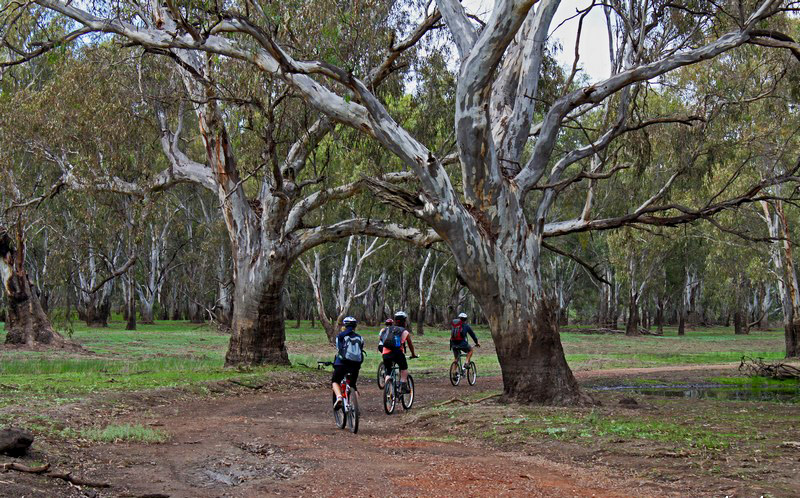
Their pestering is not enough to have me wishing I was anywhere else but here, sitting beside the Murrumbidgee River, Australia’s second longest, in The River Red Gum Parks of the Riverina Region in New South Wales.
Why have I never explored this part of the country in Australia before? Why did I think the beach was all that Australia was about and anywhere else was boring?
There is a beauty that is hard to describe in the River Red Gum National Forest. The silence often cannot be heard, not because of the noise of the busy outside world, but because of the laughing kookaburras, and flocks of squawking cockatoos and crows battling for airtime.
If you’re thinking you’d like to take a slice out of this piece of heaven, then keep reading to see how you can visit the River Red Gum National Forest and what to expect from your visit.
Where Are The River Red Gum Parks?
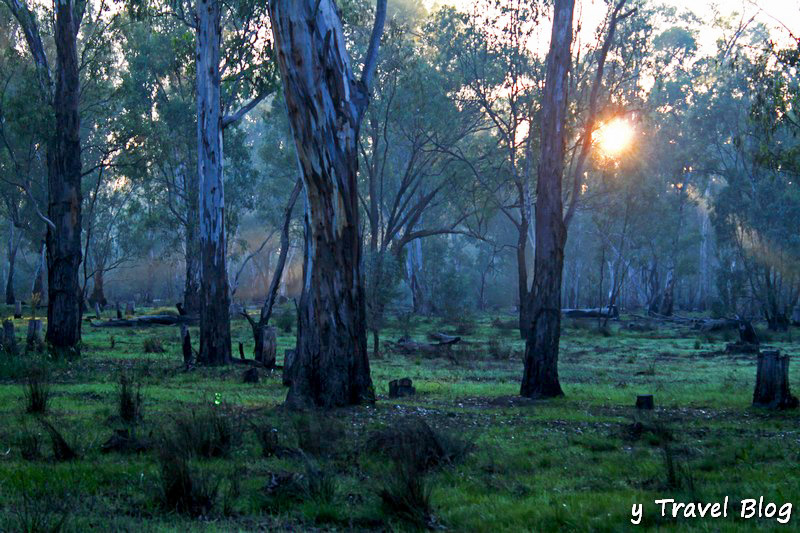
The River Red Gum National Park is a huge area comprising several state parks, reserves, and regional parks in the Riverina area of South West New South Wales.
We visited the park from the town of Narrandera, which is 549 km from Sydney, 428 km from Melbourne, 852 km from Adelaide, and 341km from Canberra.
There is confusion about where the park is, because it is not one park, but many. Consisting of several national parks on the South Australian Border.
River Red Gums can be found on the Murray River, which borders New South Wales with Victoria, and the Murrumbidgee River.
On the Victoria side, they can be found in the Barmah forest of the Barmah National Park (or Barmah-Millewa National Park as it’s known by its traditional owners), as well as in the Millewa forest on the New South Wales border.
Also part of the national park area is the Nyah Vinifera forest, the Lower Goulburn floodplains, and the significant wetlands around the Warby Range-Ovens River, Gunbower, and Hattah–Kulkyne.
They are also part of a small area in the Murray–Sunset National Park, Leaghur State Park, Gadsen Bend, Kings Billabong, and Murray Valley National Park.
About River Red Gum National Forest
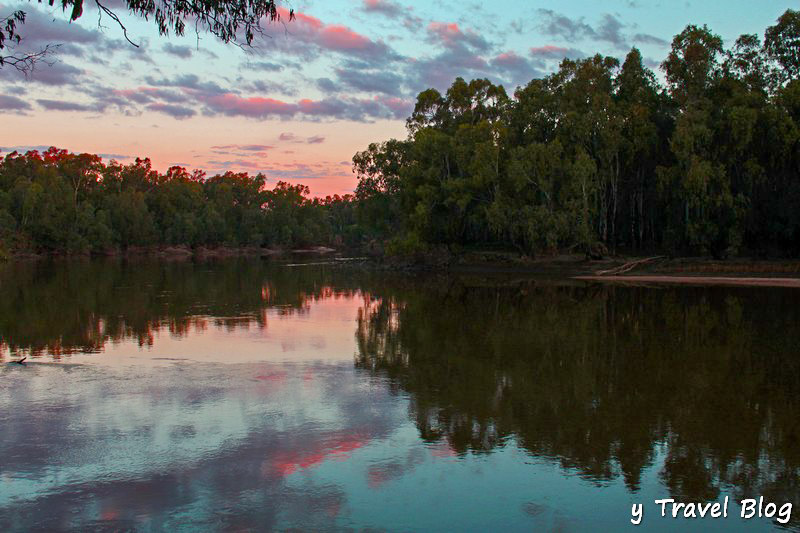
There are 150 species of birds soaring and gliding, ducking and swooning amongst the canopy, some venturing down into camp to peck at our scraps. It’s also the last known site of the Superb Parrot.
Joining them is a wide variety of other woodland animals learning to live harmoniously with each other. Now we have decided to join them to do the same.
Despite its popularity, we had the whole place to ourselves, which would not be difficult for anyone travelling to this area, because the park is 100,000 hectares in size.
15,000-20,000 hectares of that forest stretch along the Murrumbidgee River.
Within its borders, sits the largest River Red Gum forest in the world, though it’s estimated that 75% of the trees are either dead, dying, or in distress.
This is why in July 2010 the site was declared a National Park and is now the largest protected area in New South Wales.
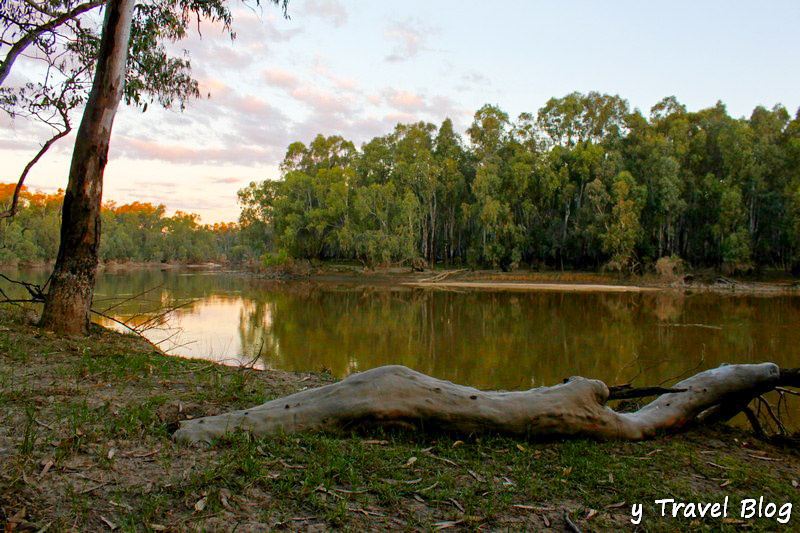
River red gums are not uncommon in Australia, particularly around inland river systems, but they are highly valuable and so this park was used for logging for many years.
Since the logging stopped, visitors can now enjoy the enormity and beauty of these trees, which are estimated to be able to grow up to 30 metres in height, and live for 500 – 1000 years.
No longer can the natural beauty be ruined by any more senseless ring barking and logging and given back to nature and ourselves to appreciate and enjoy.
It’s the perfect place to visit for those wishing to get away from Melbourne, Sydney, or Canberra; it also makes a worthwhile stopover for those overlanding from Adelaide to Sydney.
Things to Do in River Red Gum Parks
The River Red Gum Park is a huge area of forest and has so many amazing things to do. Here are some of our top suggestions for activities to do in the park…
1. Bush Camping in the River Red Gum National Park
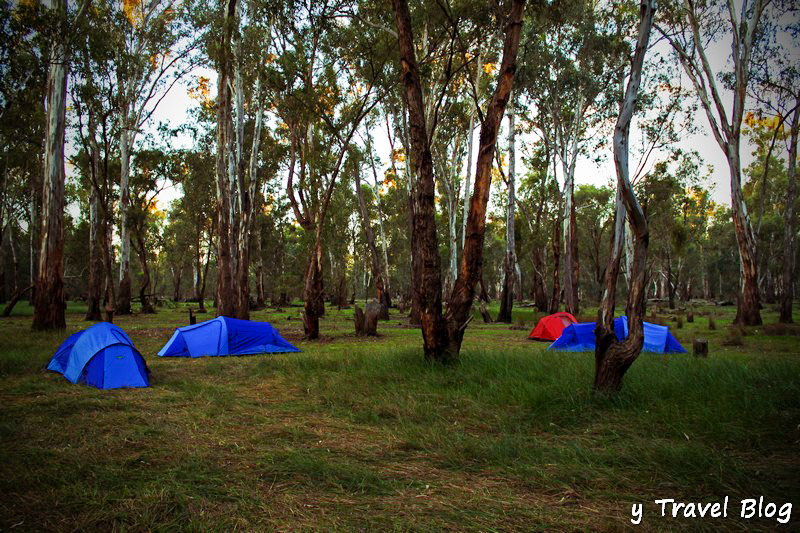
Open grassy fields, a crackling fire fed by the tonnes of firewood laying on the forest floor, and a river to bathe in. What more do you need to set up camp in?
There are multiple campsites like this to choose from within the park and along the river. And it is all FREE.
If you want to be a little closer to Narranderra town, Town Beach has a beautiful camping area near a large swimming beach.
We camped in the Graham’s Grave area, named after the local who was killed by the Aboriginal people for supplying them with poisoned flour.
Rumour has it that the flour was actually poisoned by the local white people who did not appreciate Graham helping the Aboriginals.
Don’t worry there are no ghosts walking around at night, but there will be the odd wild animal and visions of Wolf Creek murderers stepping out from the shadows and dashing cowboys named Troy to rescue you thanks to your spooky campfire talk late at night.
Our tents and sleeping mats were from Kathmandu. The Lansan Plus Tent is a comfortable two-person tent with a generous front vestibule giving you plenty of room for your luggage and a comfortable, padded self-inflating sleeping mat. Here are the delicious campfire meals we cooked, including chocolate bananas!
If you’re interested in camping, visit the visitors centre in Narrandera town to find out the best free camping spots.
2. Kayaking along the Murrumbidgee River
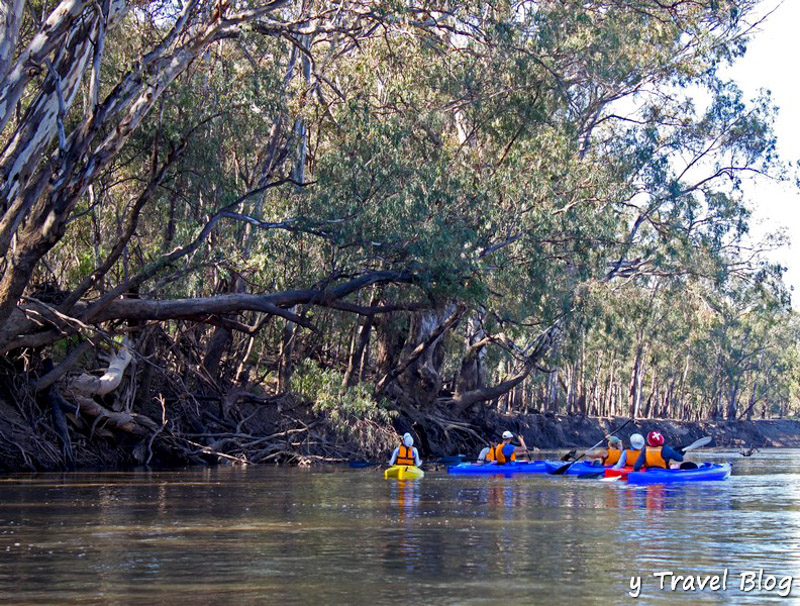
If you’re not campers, then perhaps you’d prefer to get out on the water instead.
We started off our kayaking trip on the hunt for wild koalas. We did not have to hunt for long; I think it was at the first bend we turned that a koala was spotted snuggled high up in the trees curiously watching us staring in awe at him.
During times of drought and the hotter months of summer, koalas can often be seen on the ground on the banks of the river desperate to catch a cool breeze.
A special reserve was created for them in the seventies and they were reintroduced with koalas from Queensland and French Island, Victoria.
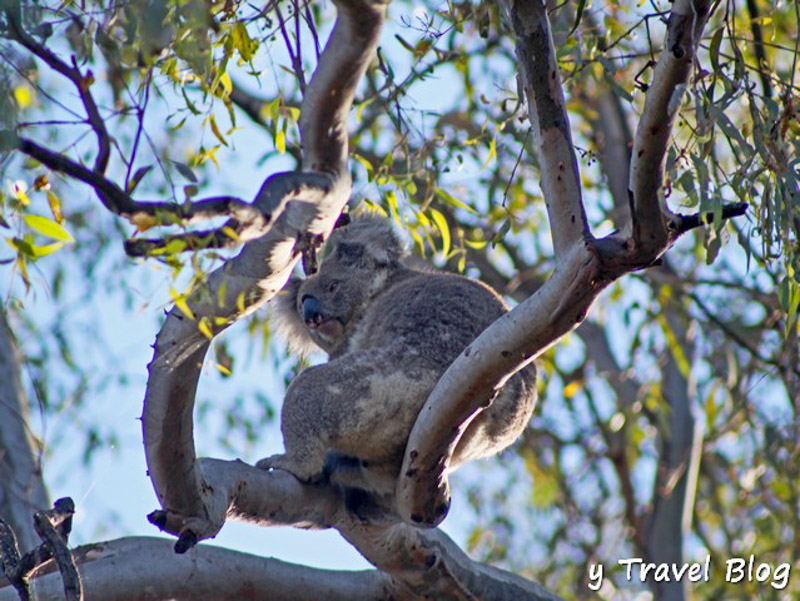
We found about five koalas along the river and all of them were outside of the reserve grounds, proving that the program worked and koalas are now thriving in the area.
It is not easy to spot koalas in the Australian wild, but here in the River Red Gum National Park you have a very high chance to see several.
I was mesmerized by the beauty and peacefulness of the 14km kayaking trip. The magnificent river moved quickly so we could often sit back and float lazily down.
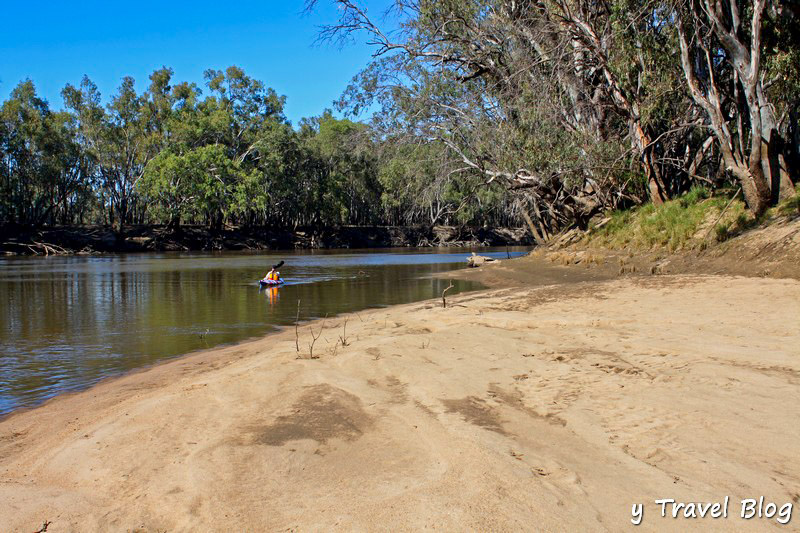
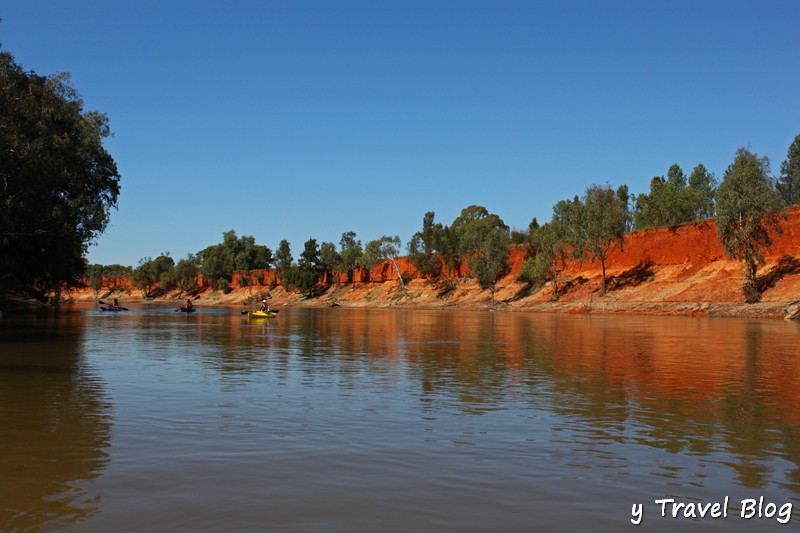
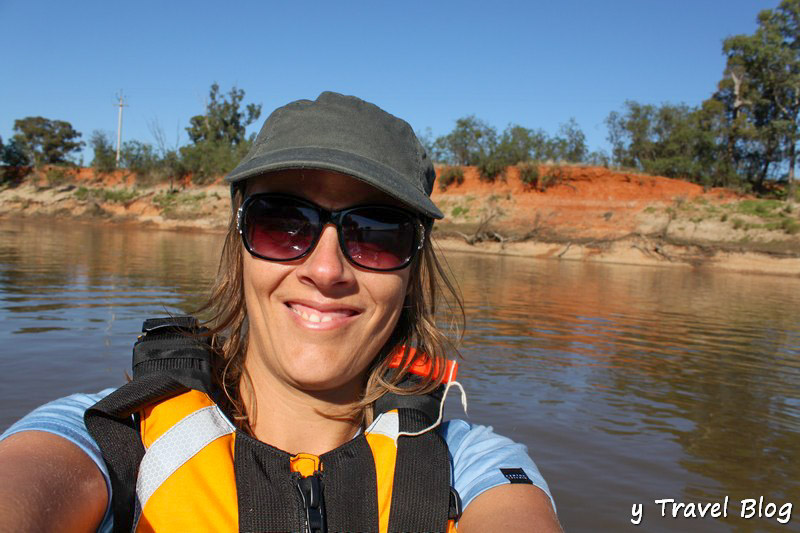
Flashes of rainbow colour burst overhead as pink galahs and yellow-crested cockatoos chased each against an azure sky from branch to branch.
The whoop whoop of the crow’s wings was heard so sharply as it swooped low over my head reminding me that I need to stop more and take in the beauty of my natural surroundings.
At times I felt I owned the place, not another soul could be found or heard and when I paddled way in front of the rest of our group I felt as if I were a part of the forest, a connected feeling with nature I have not experienced in a long time. A glowing buzz filled my body- this is why I love to travel.
3. Go Mountain Bike Riding
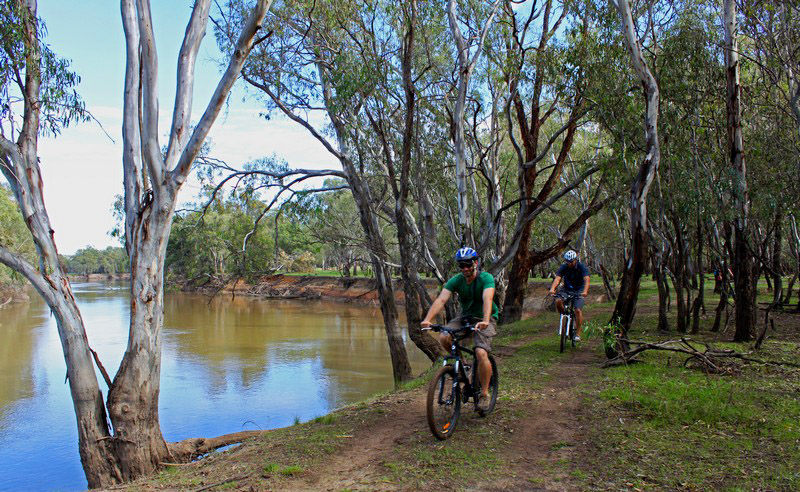
The trees in the River Red Gum National Park have a distinctive white watermark a couple of metres up from the base, evidence of the recent flooding that occurred in this area.
This meant that we had a soft and muddy mountain bike trail to ride on, which burned my legs and had me struggling for breath.
Despite the physical exertion, the mountain bike riding adventure through the forest was a thrilling way to experience the National Park. And there were many spots where the track was easy to ride.
My favourite part of the trip was the beginning as we rode through the old red gum open forest. We had a glimpse of how magical this forest was hundreds of years before logging.
Attempts are being made by National Parks to restore it to this condition where gum trees had space to thicken out and spread wide canopies across the open grassland.
To me, gum trees are the most beautiful trees in the world. I could have spent all day running through that forest hugging every single one.
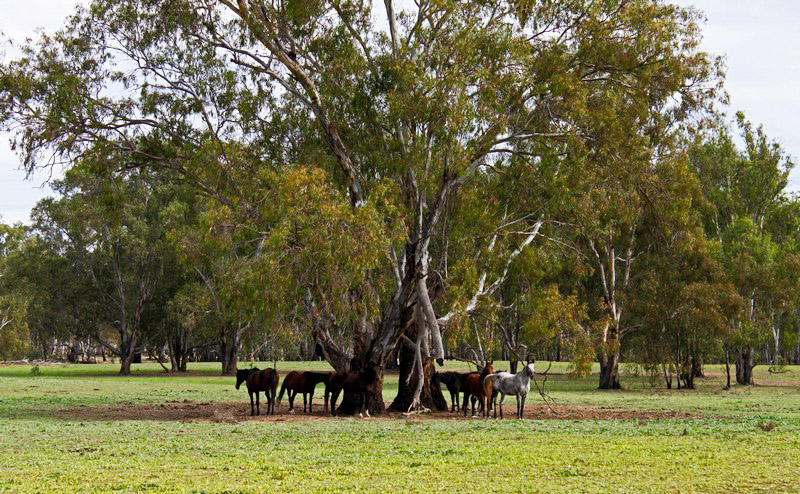
We stumbled across horses shading themselves under trees and startled kangaroos would often leap out in front of us and bound through the trees in a line. If the ground would not have been so soft I would have been tempted to chase them.
The mountain bike trails go through the Flora and Fauna reserve which is located on the edge of town, near the swimming pool. It follows the river and takes you to the Koala Reserve.
New bike trails are being set to open in the near future, once a makeshift bridge is built to give access.
This area is also popular for walking. A 3km loop takes you to First and Second Beach for a lovely picnic area and a refreshing swim on a hot day.
Final Thoughts on Visiting the River Red Gum National Parks
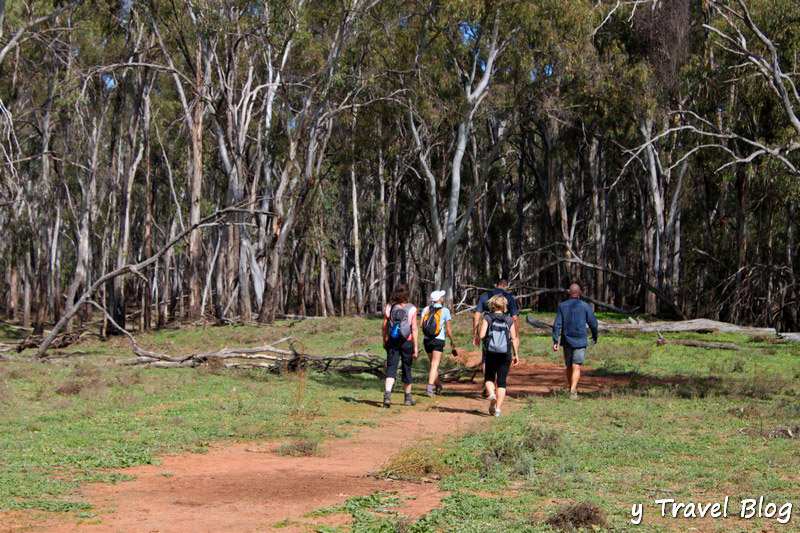
For any traveller wanting to experience true Australia country this is it.
Kangaroos bounding freely around you, wild koalas peering at you from around the branches of their home, warm and friendly locals, and gum trees are aplenty.
Not to mention the Aboriginal artists and craftsmen welcoming you into their work shed sharing a bit of the history with you and offering you a taste of their stash of witchetty grubs.
It’s not on the typical traveller’s route in Australia and I urge you to be different and make it so. You will not regret it.
Disclaimer: I was a guest of NSW National Parks and the Riverina Experience, but all thoughts, ideas, and opinions in this guide are my own.
Can you see yourself enjoying the great Aussie outdoors here in the River Red Gum National Park? Let us know in the comments.
[ad_2]
Source link
